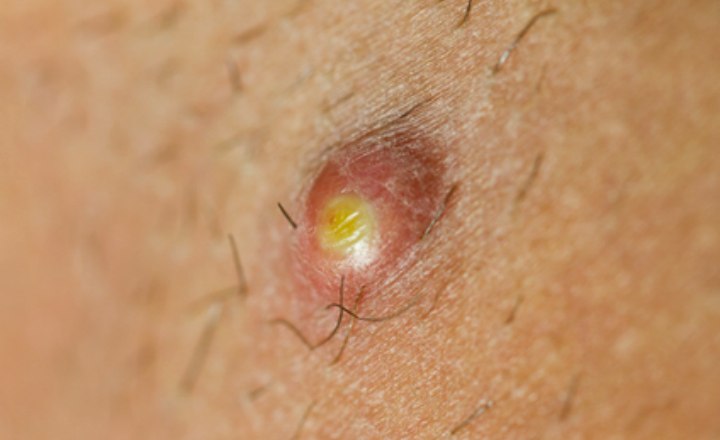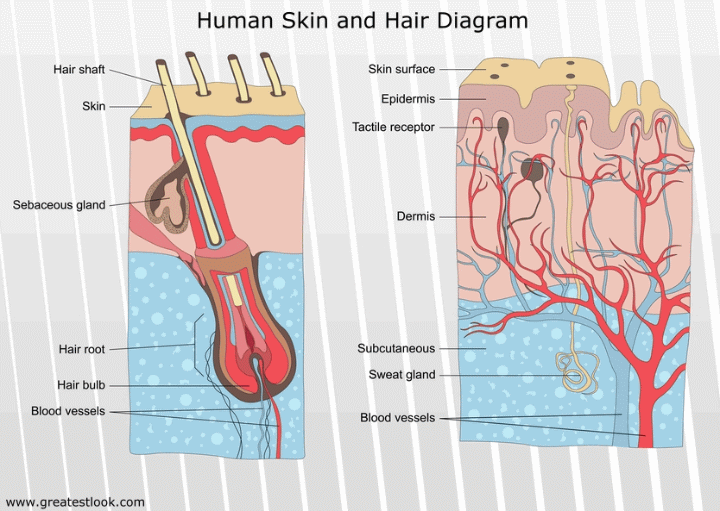Disorders of the Skin

There are a number of common disorders of the glands of the skin that it is helpful to identify. Knowing how to recognize these disorders will help you know when you should see a doctor for treatment.
Disorders of the Sebaceous Glands (Oil Glands):
Blackheads - Blackheads are called Comedones, and are worm-like masses of hardened oil in a hair follicle. They commonly occur on the forehead and nose. When the follicle fills with an excess of oil from the sebaceous gland, comedones are formed creating a blockage at the opening of the follicle. Severe cases of blackhead formation should be treated by a dermatologist.
Acne - Acne is characterized by inflammation of the sebaceous glands due to retained secretions. They occur most frequently on the face, back and chest. Simple acne blemishes can be treated with over-the-counter cleansers and treatments, while more severe acne should be treated by a dermatologist.
Seborrhea - Seborrhea is a condition caused an abnormal increase in the secretions from the sebaceous glands. An oily or shiny condition indicates the presence of seborrhea.
Asteatosis - Asteatosis is a condition of dry, scaly skin caused by a deficiency in or absence of sebum (oil). It is commonly caused by old age or exposure to cold.
Rosacea - Rosacea is a chronic congestion of the sebaceous glands primarily of the cheeks and nose. It's characterized by redness, dilation of blood vessels, and the forming of papules and pustules (pimples with and without puss). If you suspect that you have rosacea, you should consult your dermatologist.

Disorders of the Sudoriferous Glands (Sweat Glands):
Anhidrosis - Anhidrosis is a deficiency in perspiration that is usually caused by fever or certain skin diseases. It requires medical treatment.
Bromhidrosis - Bromhidrosis is a condition of foul-smelling perspiration, usually noticed in the underarms or the feet.
Hyperhidrosis - Hyperhidrosis is excessive sweating, caused by heat or general body weakness. Medical treatment is required.
Prickly Heat - Prickly heat is medically known as Miliaria rubra. It's an acute inflammation of the sweat glands, characterized by small vesicles and accompanied by burning, itching skin. It's caused by exposure to excessive heat.
Inflammations of the Skin:
Dermatitis - Dermatitis is an inflammatory condition of the skin that can take various forms, including vesicles or papules.
Eczema - Eczema is an inflammatory, painful skin disease presenting many forms of dry or moist lesions. It can be acute or chronic, and its cause is unknown. You should see a physician for treatment.
Cold Sores - Fever blisters and cold sores are known as Herpes Simplex, a recurring viral inflection. It is characterized by the eruption of a single vesicle or group of vesicles on a red and swollen base. They usually appear around or near the mouth and nose and rarely last more than a week. They are contagious.
Psoriasis - Psoriasis is characterized by red patches in the skin covered by white-silver scales. It is usually seen on the scalp, elbows, knees, chest and lower back. If it is irritated bleeding points can occur. It is not contagious.
©Greatestlook.com